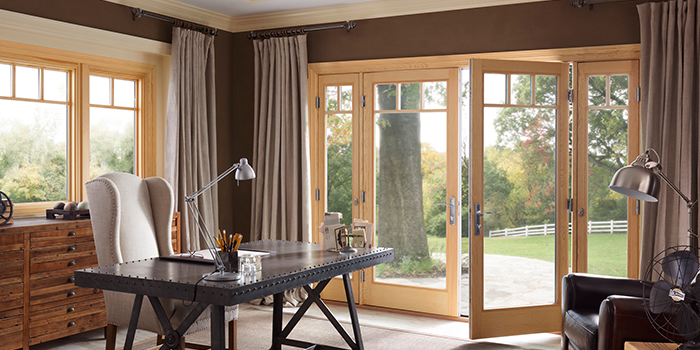
Doors
According to Energy Savers, new exterior doors often fit and insulate better than older types. If you have older doors in your home, replacing them might be a good investment, resulting in lower heating and cooling costs. The R-values of most steel and fiberglass-clad entry doors range from R-5 to R-6 (not including the effects of a window.) For example: A 1-½” (3.81 cm) thick door without a window offers more than five times the insulating value of a solid wood door of the same size.
Glass or “patio” doors, especially sliding glass doors, lose heat much faster than other types of doors because glass is a very poor insulator. Most modern glass doors with metal frames have a thermal break, which is a plastic insulator between inner and outer parts of the frame. Models with several layers of glass, low-emissivity coatings, and/or low-conductivity gases between the glass panes are a good investment, especially in extreme climates. Over the long run, the additional cost is paid back many times over in energy savings. When buying or replacing patio doors, keep in mind that swinging doors offer a much tighter seal than sliding types.
To check if there are any incentives or rebates available for this product in your area, please visit the Database of State Incentives for Renewables and Efficiency (DSIRE).
Minimum Requirements
- Exterior door products must be NFRC Certified and meet ENERGY STAR Certification requirements:
- Opaque: U-Factor ≤ 0.21 and SHGC = Any
- ≤ 1/2-Lite: ≤ 0.27 and SHGC ≤ 0.30
- > 1/2-Lite: ≤ 0.32 and SHGC ≤ 0.30
- Door products must replace existing product; no door additions.
- NFRC label for each different product to be submitted with Completion Certificate.
- Product must be installed per manufacturer’s specifications.
- Product must meet Title 24 requirements.
